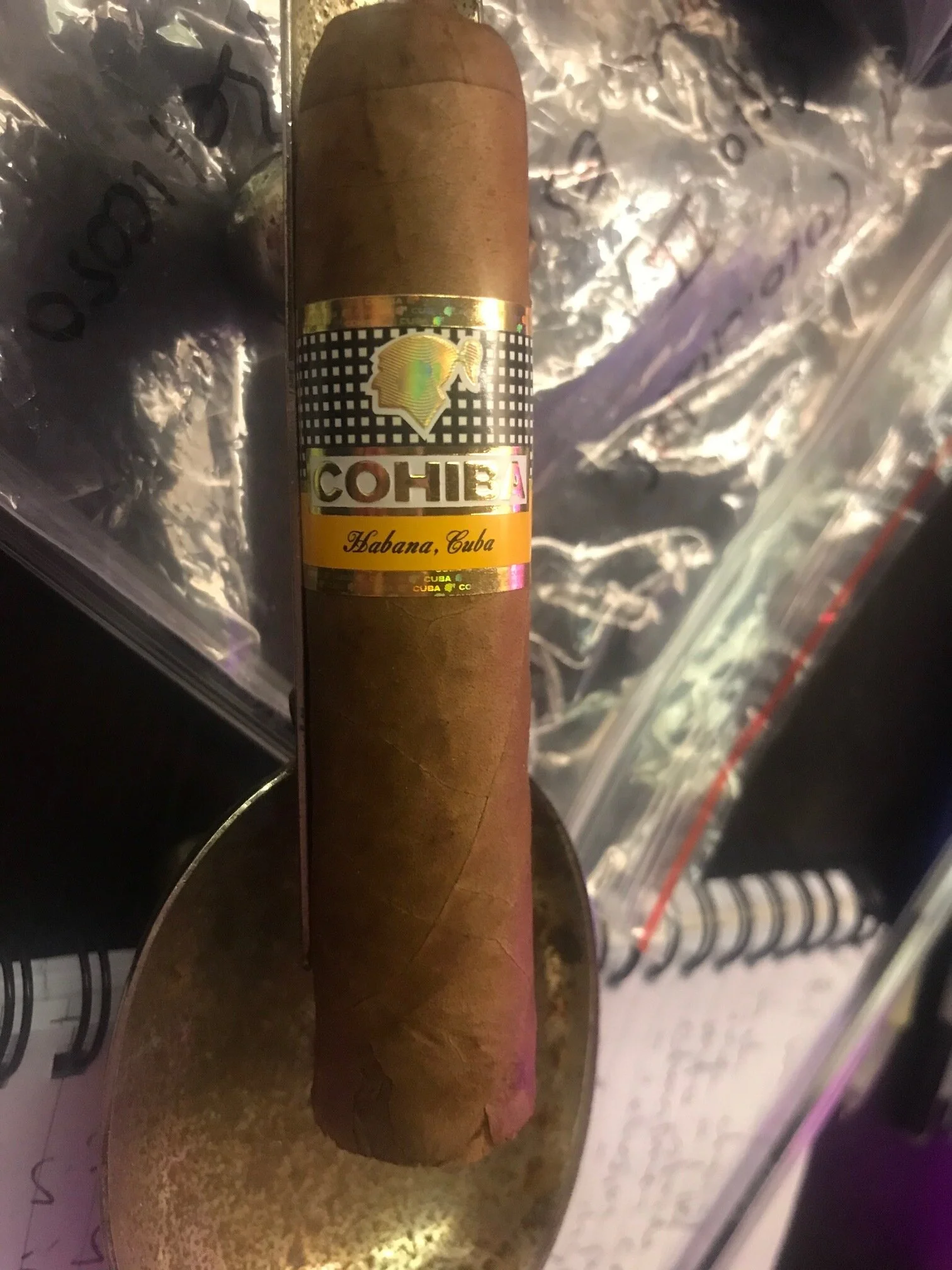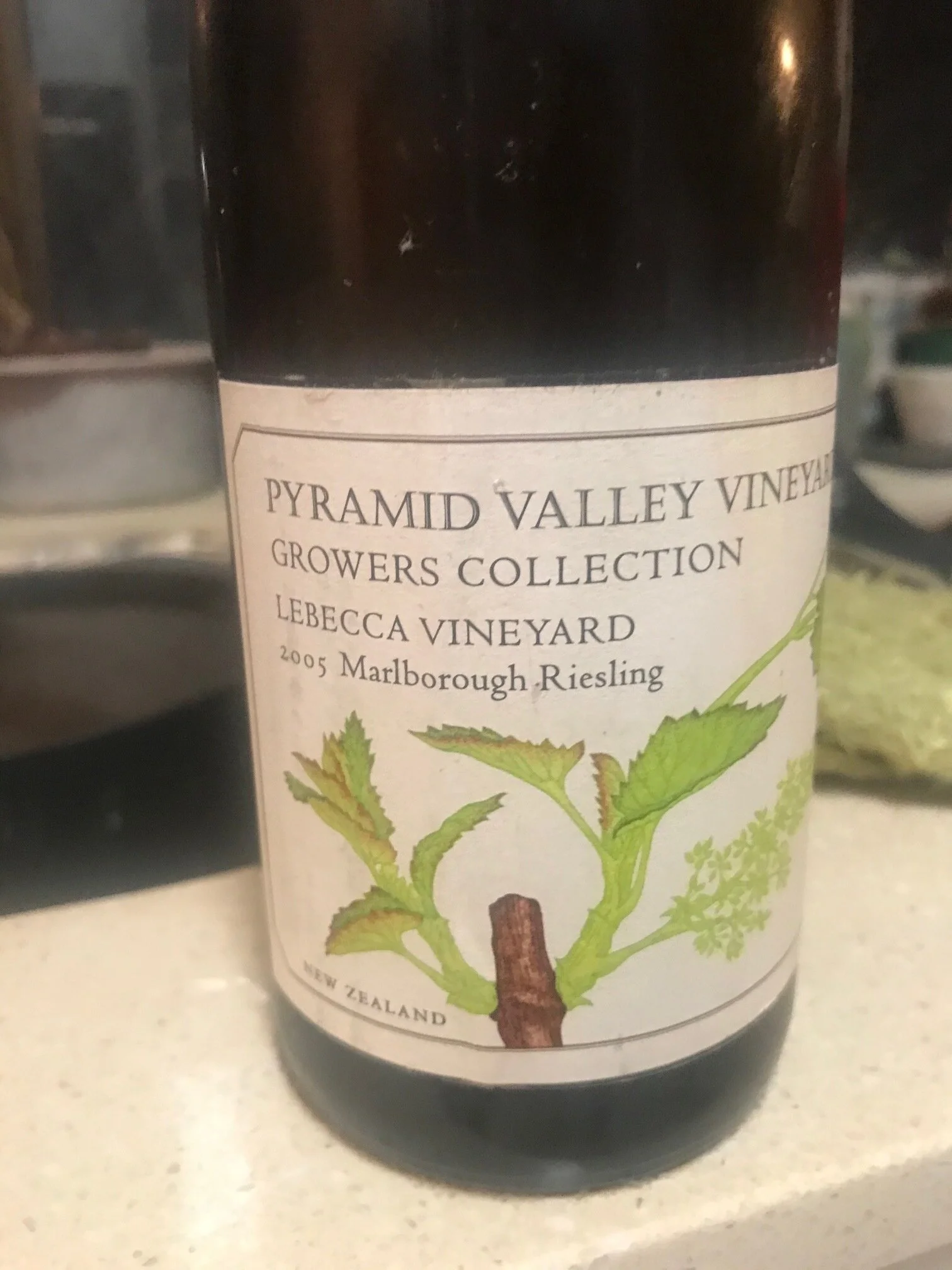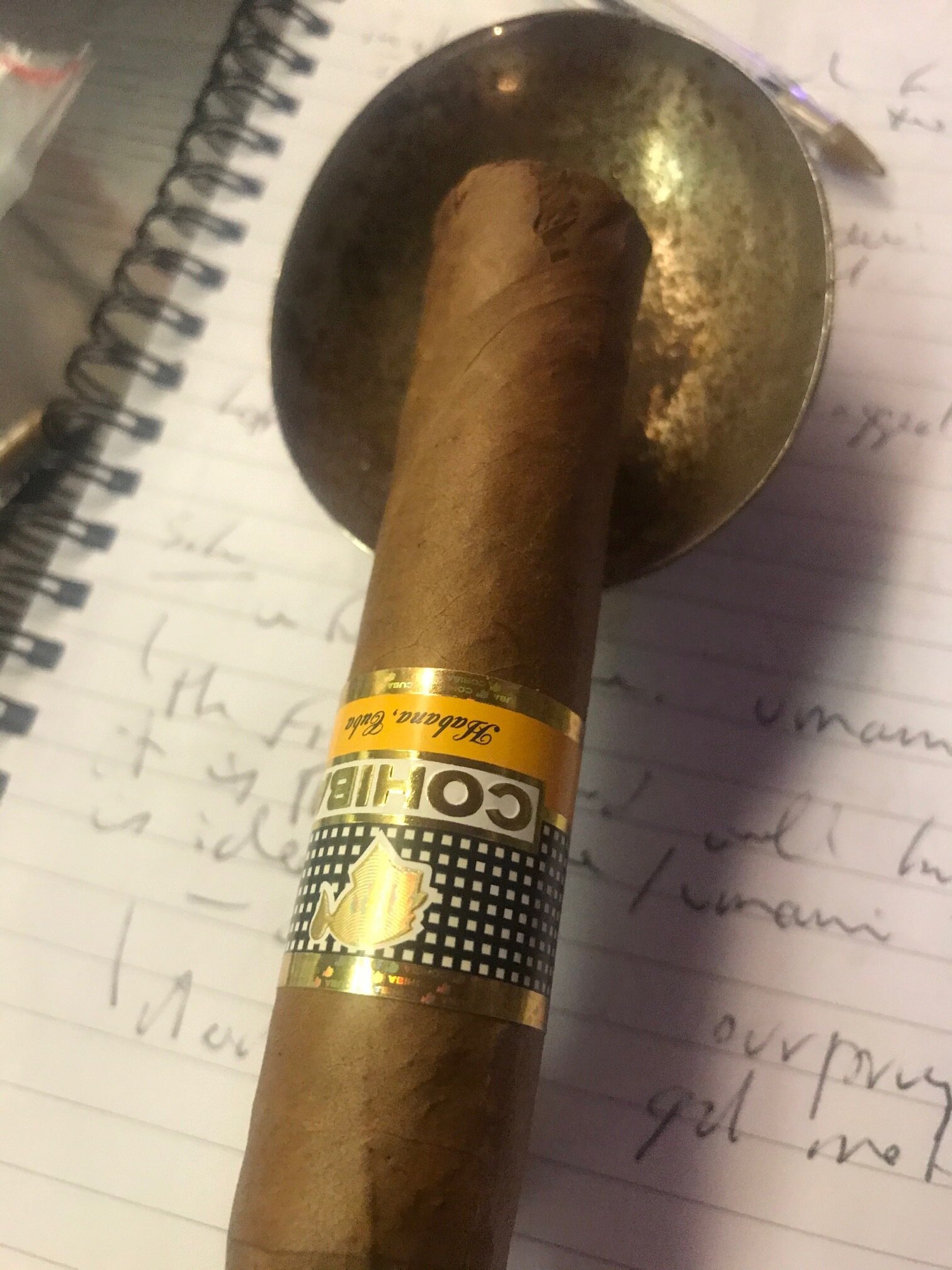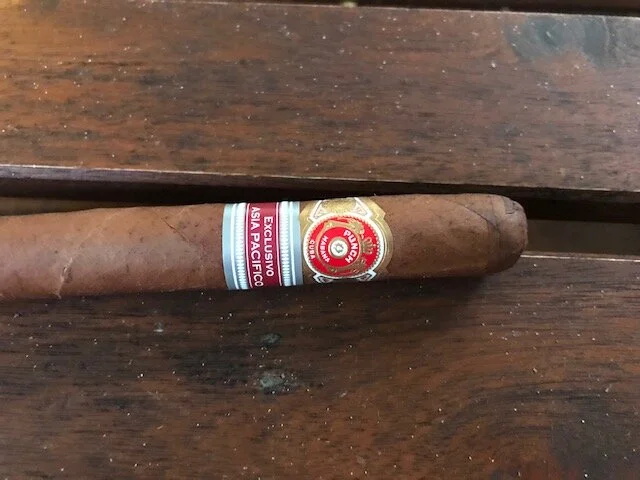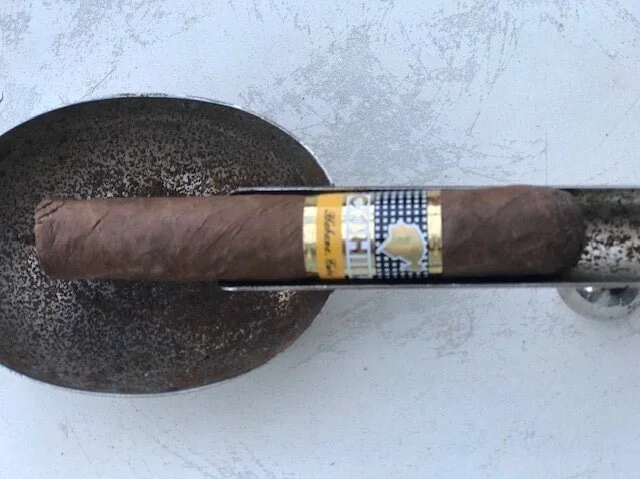Cohiba Medio Siglo - Pyramid Valley Wines
Not often I go for a short, fat cigar but surely if anyone is going to do it well, that would be Cohiba. So, the Cohiba Medio Siglo. Honestly, if I may allow my prejudices to take over for a moment – and haven’t we seen enough of that from everyone this year – it looks more like a parody of a cigar than a real one. But I am always prepared to take one for the team.
The Medio Siglo was introduced in 2016 as part of the celebrations for Cohiba’s 50th anniversary. It was one of a trio, along with the ‘Cohiba 50 Aniversario’ and the ‘Cohiba Majestuosos 1966’. It was the first new vitola to join the Siglo series since 2002 when we saw the Siglo VI get on board. This one was dubbed No 19 in the Cigar Journal’s Top 25 from 2016. I'm sure that is very impressive.
The Medio gives a nod to two of the famous Siglo range. With a ring gauge of 52 and a length of 102, it has the length of the Siglo I (although bizarrely, it seems so much shorter – optical illusion?) and the ring gauge of the Siglo VI. Basically, a Petit Robusto rolled at El Laguito.
Enough digressing. I probably should not have been surprised at how much I enjoyed this smoke, but I was. Lovely ripe notes, caramel, mild chocolate, a little toast and a subtle creamy texture. Some oatmeal. Medium-bodied and seamless. Well constructed. It finished with a lovely creamy note and a pleasant sweetness. A cigar I really did like a lot, although I'd like it a lot more if it were bigger, say the size of a Siglo VI. Which would make it a Siglo VI. For me, 92.
For matching, I went with something slightly different. I was doing something on the fantastic wines of Pyramid Valley from New Zealand, which I will, unsurprisingly and unashamedly, plagiarise for here.
At the end of tasting current wines, I went to the cellar and pulled out an old bottle I had – the Pyramid Valley ‘Lebecca Vineyard’ Marlborough Riesling 2005. To be honest, this was a bit of a hail Mary as I expected it to be long past it. They made it as an Auslese style, at just 8.5% alcohol and a level of sweetness, though not sure exactly what. As it happened, it was just gorgeous. A wonderful golden colour, indicating some serious maturity but not a hint of tiredness or lack of life or condition. Nicely balanced and the sweetness in this wine has come to the fore, but everything is in proportion. Honey, apple pie, peaches, baked fruits, this is a wonderfully rich and delicious wine. Great length. For me, 95.
And as a match, whacko. Hand in glove. A wonderful combination. Makes me think that exploring sweeter styles with subtle cigars might be very worthwhile.
And Pyramid Valley?
Around a dozen years ago, during a trip to New Zealand – possibly for a rugby game, trout fishing or the wineries (the memories of some of these trips merge) – I had one of those days. I got to visit not one but two wineries on my bucket list. In truth, I had been to the extraordinary Bell Hill before, but it was my first visit to cult favourite, Pyramid Valley (while this may focus on the wonders of PV, I am at least as equally enamoured of the wines of Bell Hill).
Both of these tiny operations are in the Waipara region, North Canterbury, in the southern part of the South Island.
At the time, it was not that easy to visit PV, or at least that is what my dodgy memory is telling me. But I vividly remember my first impression.
Mike and Claudia Weersing, the founders of PV, could not have been more welcoming. And there, on a ledge, was a rather rare jar of Cohiba cigars (specifically what, the memory is not that good). Turns out that Mike, originally from California (Claudia is originally from Germany but grew up in America), was a fan and we spent some time yacking about cigars, Cuba and the usual cabbages and kings before we remembered that I was actually there to talk about their wines.
Mike and Claudia established PV around 2000, but it was in the works for many years before that.
Mike had an art history background but in the early 90s, travelled to Burgundy – the “seeds of inspiration”, I believe he called it. Mike worked in Europe till the late 90s, at some impressive wineries – Pousse d’Or, de Montille, Potel, Deiss and Loosen – but also did vintages in Oregon, with James Halliday at Coldstream Hills in Australia’s Yarra Valley and at Neudorf in the Nelson region at the very north of the South Island of New Zealand, one of the world’s great brown trout regions. While in Europe, Mike lived in an old VW van, while he worked and studied.
By late last century, he had begun the search for the best possible site to grow Pinot Noir and, to a lesser extent, Chardonnay. They searched from one end of New Zealand to the other, as well as other countries.
Clay/limestone was the key. The former providing volume, body and flesh; the latter, backbone, structure and vigour. Soil is obviously a crucial element of fine wine, but in truth, I usually think that your typical wine lover has about as much interest in it as I have in knowing where the components to the computer I am tapping on, came from. In other words, none at all. Yet, I have never had, before or since, such an in-depth discussion on the pros and cons of various soil types as I had with Mike that day. I still have pages of notes from that discussion, which ranged around the globe to different soils and their impact on different varieties – fascinating to me, but I will spare you. Suffice to say, if you want to learn about soils and their impact on wines, go find Mike.
One other thing about soil geeks. They dig holes. Every chance they get, they’ll dig a hole. Hundreds of them. And the samples get sent off to laboratories on the other side of the planet, for analysis and assessment. Mike looked for three years in New Zealand and fifteen overall – he mentioned Europe, California, New Mexico, Portugal (not sure why it got separated from the rest of Europe but no matter) and all over Australia.
Mike would speak of liquifying the geography into wine. He has also been quoted elsewhere, saying that he knew he was “anal” about the search but he also knew he was “old enough and poor enough” that he really only had one shot at it, and he was determined to get it right. For him, the grape is merely the messenger, ‘not the voice’.
I understand he was about to give up and head to Uruguay when the results came back from the final holes and he had what he was looking for. If I recall, it was only yards from the very first hole he’d dug, which had given a completely different result. It does show how much the soil/terroir can vary in an extremely short distance. The place was an old sheep farm in Waikari, North Canterbury.
Mike undertook various trials before close planting his tiny vineyards, but they have also used grapes from local growers. He is very much a supporter of biodynamics, believing from his experience in Europe that it produces the healthiest vineyards, and also wild yeasts. Claudia was more sceptical of biodynamics but soon came around.
The aim was to eventually make around 1,500 cases from the Estate fruit.
Mike’s approach will be familiar to lovers of Burgundy and indeed, anyone who focuses on terroir, rather than merely the taste of grapes.
Tasting notes from that visit are hardly relevant today, but my favourite at the time was a Pinot Noir from the Calvert Vineyard in Central Otago. I remember a subsequent occasion when fruit sourced from this vineyard was split among three makers and we had the chance to see the influence of those three winemakers on the same fruit – they were Mike from PV, Blair Walter from Felton Road and Steve Smith from Craggy Range. It was an indicator of what was to come.
As mentioned, the Estate is small, just 2.2 hectares, and planted only with Pinot Noir and Chardonnay, though other wines are made from elsewhere. The Estate has four discrete sites. The sites on the property are not neat squares or anything like it. They follow the soil and hence are almost like abstract art.
The four sites are the ‘Earth Smoke’ and ‘Angel Flower’ vineyards, both planted with Pinot Noir; and the ‘Lion’s Tooth’ and ‘Field of Fire’ vineyards, planted with Chardonnay. Terrific names, when you first hear them but they come from a rather prosaic source – the weeds which grow between the rows. It could have been worse. The weed known as ‘field of fire’ is also called ‘quack’. Angel flower is also called yarrow and lion’s tooth is another name for dandelion.
I mentioned an indicator of things to come. Steve Smith was one of the founders of Craggy Range but left a few years ago to establish a small wine empire with his friend from the States, squillionaire businessman, Brian Sheth. In 2017, Steve and Brian purchased Pyramid Valley for NZ$8 million (who knows, perhaps in the years to come they might make a takeover offer for Craggy Range itself). They also brought the Lowburn Ferry Estate in Central Otago into the fold. If anyone knows these wines well enough to continue the legacy of Mike and Claudia, it is surely Steve.
In 2018, they expanded to include the Manata Estate at Lowburn, as mentioned, making them a two-estate property. The original estate will be named Waikiri Estate, while Lowburn Ferry is to become Manata Estate.
Some notes scores from recent tastings (if you want more detail, check out the piece on Quill and Pad or www.tastingbook.com).
North Canterbury Sauvignon + 2019 – 90. $30.
North Canterbury Chardonnay 2018 – 95.
North Canterbury Pinot Noir 2018 – 96.
Central Otago Pinot Noir 2018 – 94.
‘Field of Fire’ Chardonnay 2018 – 96.
‘Earth Smoke’ Pinot Noir 2018 – 97.
KBG


